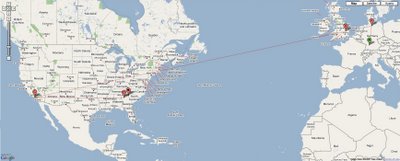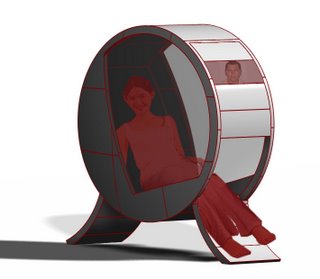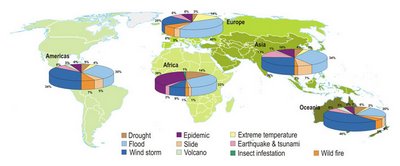china's three gorges dam is the largest hydro-electric dam in the world. at 185 meters tall and 2,309 meters across (included in the ship lifts and locks), it is five times the size of the hoover dam and is the same length as the golden gate bridge in
san francisco. construction began in 1993. the reservoir behind the dam began filling in 2003, and should reach its capacity of 39.3 billion cubic meters by 2009, when all of the construction will be complete.

three gorges dam compared to hoover dam + golden gate bridge
the cost of the dam was staggering. the original budget was around 25 billion
USD. however, it is expected that the final budget could be in excess of 100 billion
USD (there have been no official statistics released). at full capacity, the dam will generate 85 billion kilowatt hours of electricity annually. when the dam was designed, it was thought that this would provide 10% of china's electrical needs. however, china's economy has boomed since the dam was designed. in light of the higher demand for energy, the three gorges dam will only be able to supply 3.88% of the china's electrical needs. the dam could, however, provide enough electricity to fulfill the combined needs of
ireland,
peru, north
korea, and
croatia. although its impact will not be as great as initially planned, the dam will have a generally positive effect on the environment. currently, 80% of china's electricity is generated by burning coal, which creates an immense amount of air pollution. the dam will affect a net decrease in coal consumption of 40-50 million tons. as a result, china's discharge of carbon monoxide will be reduced by 10,000 tons.
the greatest impact of the dam will be felt upstream. approximately 244 square miles will be flooded when the reservoir is full (i.e. the reservoir will be 2.75x as large as lake
hartwell and 12x as large as the island of
manhattan). over one million
chinese in 1200 villages and two major towns have been or will be displaced. critics argue that the
chinese government has underfunded the relocation effort, as those who have been displaces are often given poor quality land on which they cannot sustain. as a result, many have resorted to begging, garbage collecting, and prostitution.

reservoir area comparison
the three gorges area is also a cultural treasure trove. the area was first inhabited over 2 million years ago. a last minute effort has been made by the
chinese government to save the 1,200 known archaeological sites, but it seems that it may be too little, too late. experts claim that the the
chinese government had provided only 10% of the funds necessary to properly excavate and preserve all the archaeological sites soon to be flooded.
the only way to avoid the loss of artifacts would have been to reconsider the location of this dam. however, the problem of relocating the people could possible have been solved with a mega-solution. is it possible for the dam to become a city, to be constructed so that it could be inhabited. the flow of water could of course generate all the electricity this dam could use. it could also serve to irrigate green spaces and farming operations that could be incorporated into this mega structure and could also be used for thermal cooling and industrial processes.




































